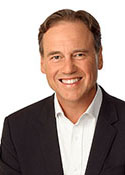Flinders
Margin: Liberal 11.8%
Region: South-Eastern, Victoria
In a nutshell: Greg Hunt’s seat was famously lost by Prime Minister Stanley Bruce in 1929, but Labor has only managed to win it on two occasions since.
Candidates in ballot paper order

|
YVONNE GENTLE SHANE W LEWIS WILLISA HOGARTH CAROLYN GLEIXNER GREG HUNT BEN WILD |
Environment Minister Greg Hunt’s seat of Flinders encompasses the southern part of Victoria’s Mornington Peninsula, including the mouth of Port Phillip Bay at Portsea, along with the Westernport Bay and Phillip Island area further to the east. Its territory along Port Phillip Bay commences at Mount Martha, 60 kilometres to the south of central Melbourne, from which it extends through Dromana, Rosebud and Rye to Sorrento and Portsea, an area popular with retirees. Its other major centres are Somerville in the centre of the Mornington Peninsula and Hastings along the western shore of Westernport Bay. The electorate has existed federation, and has covered almost the entirety of its present area since that time. It originally extended north to Dandenong and east to Drouin, Warragul and Leongatha, before the latter areas were absorbed by the new seat of McMillan when parliament expanded in 1949, and the electorate of Bruce was created to accommodate Melbourne’s south-eastern expansion in 1955.
Flinders has been won by Labor on three occasions in its history, most memorably with the defeat in 1929 of the then Prime Minister, Stanley Bruce. Bruce recovered the seat in 1931, and it would next be won by Labor at a by-election in 1952, before returning to the Liberal fold at the next general election in 1954. Phillip Lynch came to the seat in 1966, going on to serve as Treasurer in the first term of the Fraser government, then resigning a month before the December 1977 election over his use of a family trust to minimise tax. Lynch returned to cabinet after the election upon being cleared by an inquiry as Industry and Commerce Minister, the Treasury portfolio remaining with his successor, John Howard. His retirement precipitated a momentous by-election in November 1982, at which Peter Reith retained the seat for the Liberals in the face a surprisingly mild swing of 2.3%. This sealed Bill Hayden’s fate as Labor leader, and he was toppled by Bob Hawke on the day Malcolm Fraser called the 1983 election the following February. It was at that election that Labor won Flinders for the third and so far final time, with Reith losing to Labor’s Robert Chynoweth without having had the opportunity to assume the seat he had won at the by-election.
With the enlargement of parliament at the 1984 election, Chynoweth moved to the slightly safer new seat of Dunkley, and Reith recovered Flinders with a swing of 1.5%. Reith held the seat with fair-to-middling margins until he retired after an eventful five years as a Howard government minister in 2001. He was then succeeded by Greg Hunt, who gained a secure hold on the seat with consecutive swings of 3.9% in 2001 and 3.5% in 2004. Hunt won promotion to parliamentary secretary in January 2007, and then to shadow cabinet in the important climate change and environment portfolio after the 2007 election defeat. He has maintained the environment portfolio ever since, although the climate change portfolio was abolished after the Abbott government came to power. Hunt’s present margin in the seat is 11.9%, following a 2.8% swing in his favour at the 2013 election.
Analysis by William Bowe. Read William’s blog, The Poll Bludger.


